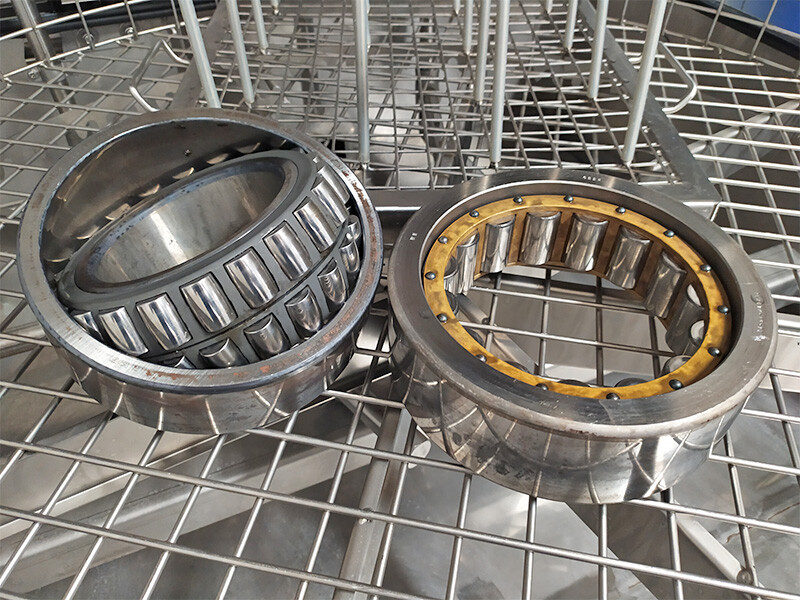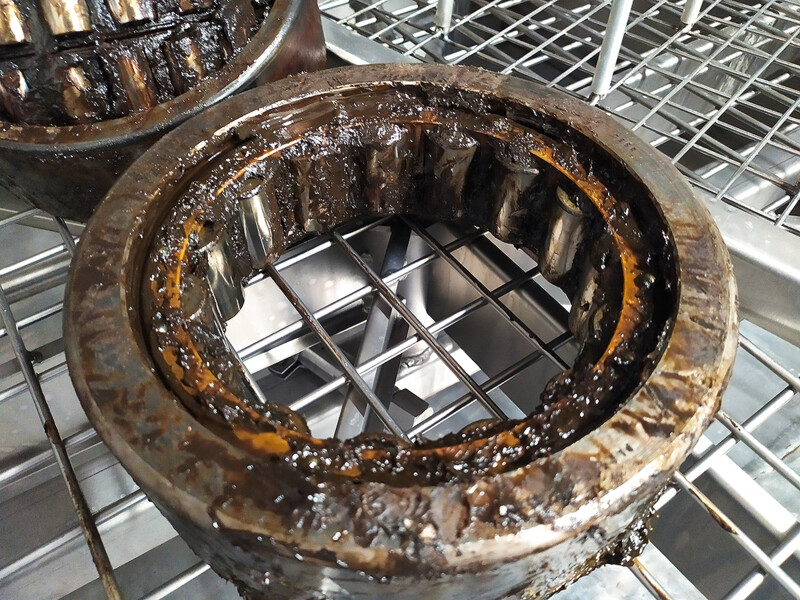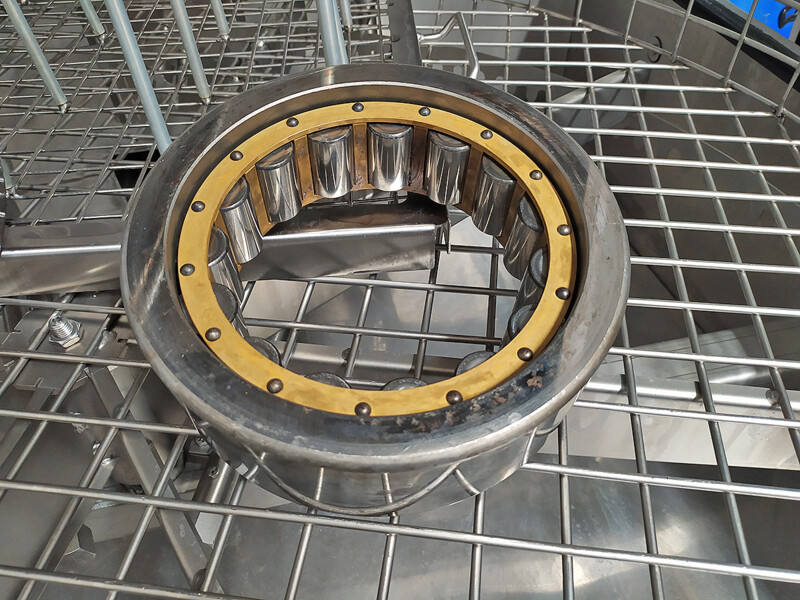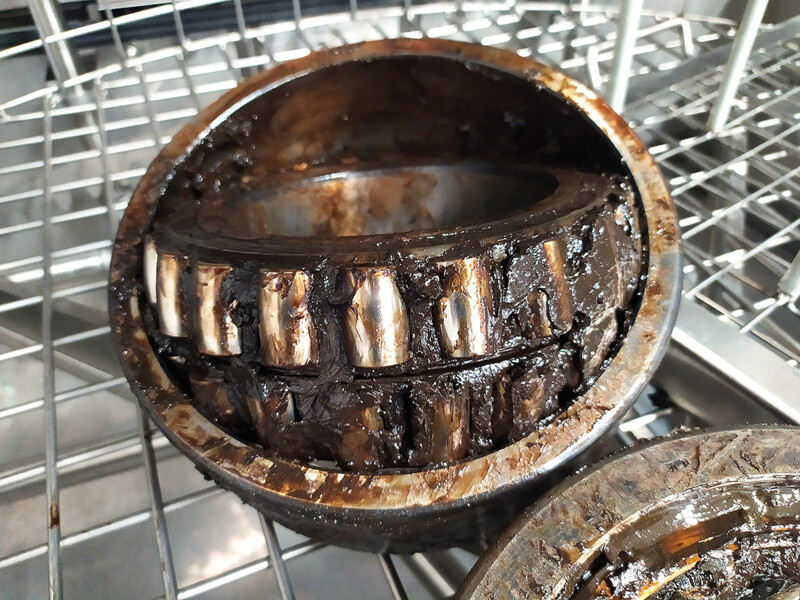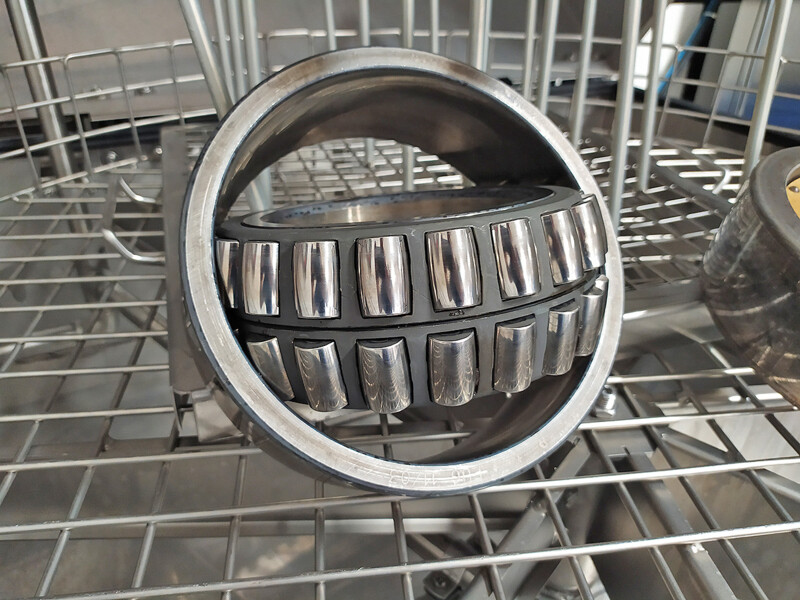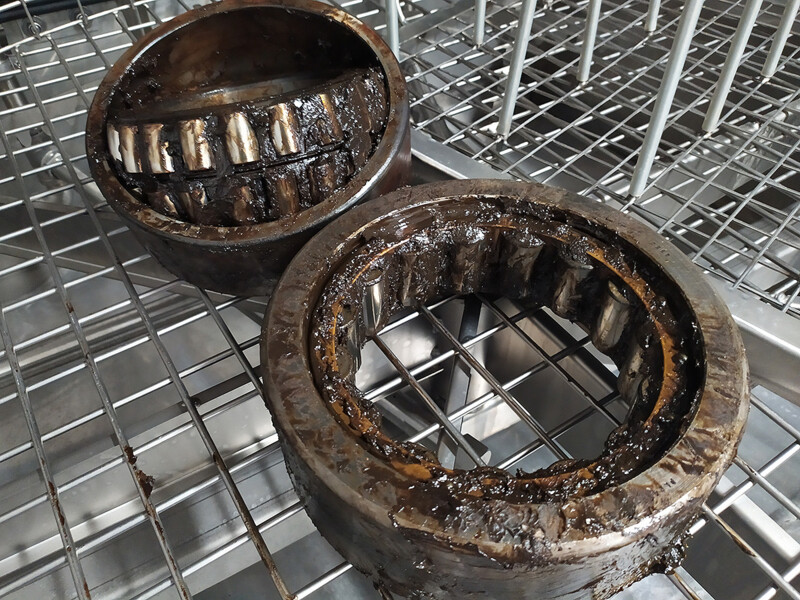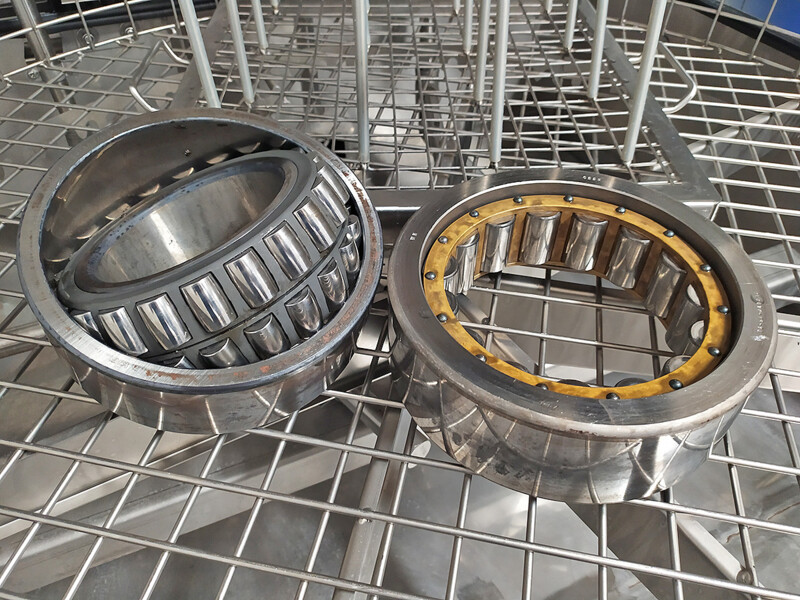Rail Bearing Cleaning: High Pressure Automatic Solution
The company and the commissioned work
Several European and non-European companies operating in the field of railway component maintenance have commissioned the cleaning of bearings from significant grease residues to accelerate related maintenance and regeneration operations.
The need for automatic cleaning
Due to the type of contaminant to be removed and the shape of the bearings, manual cleaning presented several issues, such as the need for dedicated labor and unsatisfactory cleaning results. Therefore, it was necessary to find an automated solution.
High-pressure washing machines and customizations
To solve the problem, various washing machines were adopted depending on the production frequency required by the different customers (rotary basket systems for small productions, tunnel systems for high-volume productions). These washing machines were equipped with a high-pressure pump capable of reaching 8-10 bar to ensure powerful and effective cleaning. Additionally, customizations were made to optimize the application, such as lowering the washing height to bring the nozzles closer to the parts and increase the impact force of the water, the use of a specific type of nozzles designed by Teknox, and their dedicated placement to optimize system performance.
Benefits and advantages of the adopted solution
The implementation of the high-pressure washing machines resulted in several significant benefits. Firstly, the automation of the cleaning process improved overall efficiency, allowing the customer to save time and valuable resources. The removal of excess grease through a deep and thorough cleaning contributed to raising the quality standards of subsequent processing, improving the work environment as well.
Sustainability and reduction of environmental impacts
One of the major advantages of the adopted solution was its positive impact on the environment. Compared to manual cleaning with pressure washers, the high-pressure washing machines helped significantly reduce the amount of water used in the cleaning process, optimizing the use of water resources and minimizing waste. Furthermore, thanks to the customizations, such as the lowered washing height and nozzle configuration, it was possible to focus the impact force of the water exactly where needed, further reducing water and energy consumption.
Conclusions
Through the implementation of a high-pressure washing machine customized for bearing maintenance molds, companies have achieved an efficient, precise, and sustainable solution for periodic bearing cleaning. The benefits include improved quality in the production process, reduced operational costs, and a lower environmental impact. The choice of model and the adopted customizations contributed to optimizing performance and ensuring exceptional cleaning results.

